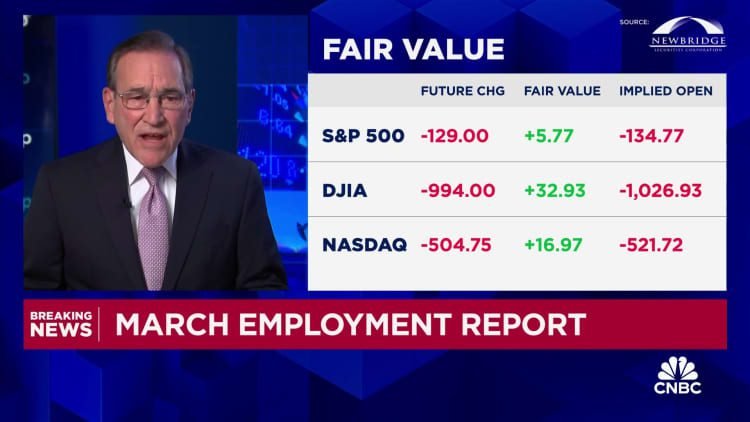Strong Job Growth Report Amid Trade Tensions
In March, the U.S. labor market demonstrated stronger-than-anticipated growth, which has provided some reassurance about its stability despite ongoing economic uncertainties. According to the Department of Labor, nonfarm payrolls increased by 228,000 in March—this figure surpasses the revised count of 117,000 jobs added in February and exceeded analysts’ predictions of 140,000, as reported by the Bureau of Labor Statistics.
However, the unemployment rate saw a slight uptick, rising to 4.2%, which is higher than the forecasted 4.1%. This increase occurred even as the labor force participation rate grew, suggesting more individuals are seeking employment opportunities. While the positive headline numbers indicate a robust job market, they come at a time marked by concerns over potential trade conflicts, following recent tariff announcements by the current administration that have sparked fears of a global trade war.
The stock market’s reaction to the jobs report was muted. Futures linked to the Dow Jones Industrial Average fell, remaining down over 900 points, while Treasury yields were notably negative. Lindsay Rosner, the head of multi-sector fixed income investing at Goldman Sachs Asset Management, noted that although the jobs report alleviated immediate concerns regarding a softening labor market, investor attention remains heavily focused on the broader implications of the tariff situation.
President Donald Trump proposed a 10% tariff on all trading partners—a move met with swift retaliation from countries like China. Consequently, Wall Street experienced a significant sell-off, as investors sought refuge in fixed income assets. In a message shared on Truth Social, Trump emphasized positive job numbers, claiming progress amidst the economic uncertainty caused by tariffs.
Despite prior indications that the labor market was robust, the tariffs could lead companies to slow down hiring until they can better understand the trade environment. March’s job figures reflect a resilient labor market, yet adjustments to previous months’ totals show considerable downward revisions. For instance, February’s job count was revised downward by 34,000, while January figures now stand at only 111,000, reducing the estimate by 14,000.
Average hourly earnings experienced a monthly rise of 0.3%, aligning with expectations, although the annual growth rate dipped to 3.8%, falling short of projections and marking the lowest level since July 2024. The average work week remained unchanged at 34.2 hours.
In terms of job growth sectors, healthcare led the way once again in March, contributing 54,000 jobs, consistent with its 12-month average. Other sectors also showed progress, with social assistance and retail adding 24,000 jobs each, while transportation and warehousing saw an increase of 23,000 positions.
Federal government jobs only declined by 4,000, despite initiatives led by Elon Musk’s Department of Government Efficiency aimed at reducing the federal workforce. It’s important to note that individuals on paid leave or severance are considered employed in the Bureau of Labor Statistics’ counts. A recent report from Challenger, Gray & Christmas revealed that layoffs related to the cryptocurrency DOGE have surpassed 275,000 to date.
Glen Smith, chief investment officer at GDS Wealth Management, remarked that while the jobs report indicates continued job growth even amidst tariff uncertainties and federal job cuts, the data primarily reflects past conditions rather than future employer behaviors.
The broader unemployment rate, which includes those who are not actively searching for work and part-time workers seeking full-time employment, decreased slightly to 7.9%. The household survey, which helps establish the unemployment rate, aligned closely with payroll statistics, showing a gain of 201,000 workers. Additionally, the number of full-time workers increased by 459,000, while part-time positions fell by 44,000.
This robust job growth amidst fluctuating economic policies highlights the complexities of the current employment landscape, as both opportunities and challenges coexist in an ever-evolving market.
